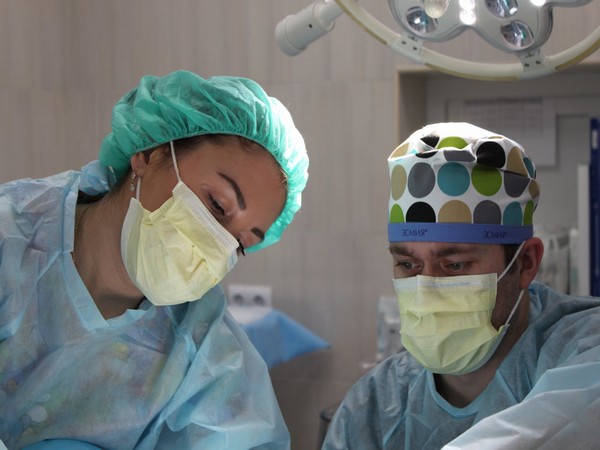Rajan Babu TB centre in Delhi was set up as Silver Jubilee Tuberculosis Hospital in 1935
A special station was built as this place was not connected with railway network in that period, Seth added.He praised the architectural and historical value of the heritage buildings in the campus, which he said, originally also served as a sanatarium since it was away from the main city and situated in a wooded area.Seth, however, lamented that despite its historicity, the old heritage building was not being kept maintained, more so due to financial crunch faced by the civic body for the past several years.

- Country:
- India
Civic-run Rajan Babu Institute of Pulmonary Medicine and Tuberculosis, located in a sprawling campus in Delhi, was originally started as a TB hospital in 1935 to mark the silver jubilee of King George V who had held a royal durbar in its vicinity in December 1911.
Located in the Kingsway Camp area in the northwesteen part of the city, the facility began its journey as 'Silver Jubilee Tuberculosis Hospital' in a handsome single-storey building, and was inaugurated by the then Chief Commissioner of Delhi JNG Johnson.
Renamed after Independence as Rajan Babu Institute of Pulmonary Medicine and Tuberculosis (RBIPMT), the medical institution is in news presently, due to a political slugfest between the AAP-led government and the BJP-led North Delhi Municipal Corporation (NDMC), which owns it, over the issue of structural safety of a multi-storey building in its campus.
Delhi Urban Development Minister Satyendar Jain on Saturday said, the city government has ordered an inquiry for vacating and sealing of this building after it had emerged that the structure might collapse any time, even as the North Delhi Mayor alleged that the AAP-led government here was trying to ''malign the image'' of the facility, which had aided in the fight against the coronavirus pandemic.
While this modern building was constructed a few decades after Independence in the over 70 acre campus of the institute, the story of the main building of the TB hospital, now a heritage structure, is very fascinating.
According to the official website of the north corporation, the hospital was established to commemorate the silver jubilee of the reign of British Monarch King George V, who was coronated in England in 1910.
In 1911, the King, along with his consort Queen Mary had arrived in India to attend a royal durbar which took place on December 12 that year to mark their coronation as the Emperor and Empress of India.
Famously known as the 1911 Delhi Durbar, it was held at a site in Burari, just a few kilometres from the the place where the TB hospital today stands.
According to the NDMC website, the old main hospital building stands at the site of a ceremonial railway station that was built just for the durbar.
Kingsway Camp name of the area, carries that link to that historic durbar, where King George V had also made the announcement to shift the imperial capital from Calcutta to Delhi.
The 1911 ceremonial event had witnessed a spectacular gathering of various royal members, kings, nawabs, wealthy and influential personalities of that era in India, and was unparalleled in its scale and grandeur.
A temporary tent city was created in the region to accommodate the guests, and a special, ceremonial station called 'Kingsway Station' was erected to receive the monarch and the guests, according to archival records.
Old images of the station, festooned with British flags, are available in various vintage postcard and photo libraries.
According to Dr D K Seth, former director of the Rajan Babu hospital, in 1935 when the silver jubilee of the coronation of King George V was being celebrated, a TB hospital was conceived and hence, named 'Silver Jubilee Tuberculosis Hospital'. Though it was renamed after the first president of India, Rajendra Prasad, affectionately called 'Rajen Babu', people still refer to it as just TB hospital, he said.
''When the hospital was set up, many of the buildings erected in the 'Kingsway Camp' for the durbar were still standing and these formed the nucleus for starting the hospital in 1935,'' Seth told PTI.
The ceremonial station built for the burbar occasion was reused and the current main building of the hospital is essentially an ''upgraded version'' of the old structure, the former director of the facility claimed.
''It is even said that the director's chamber is where the station master would sit when the station was used. A special station was built as this place was not connected with railway network in that period,'' Seth added.
He praised the architectural and historical value of the heritage buildings in the campus, which he said, originally also ''served as a sanatarium'' since it was away from the main city and situated in a wooded area.
Seth, however, lamented that despite its historicity, the old heritage building was not being kept maintained, more so due to financial crunch faced by the civic body for the past several years. ''We tried to do something for the heritage aspect of the main old building, which is a beautiful structure, and other heritage structures in the campus, in terms of documentation and other work, but it did not fructify,'' he rued.
(This story has not been edited by Devdiscourse staff and is auto-generated from a syndicated feed.)
ALSO READ
Calcutta High Court Demands CBI Update on RG Kar Medical College Case
Calcutta High Court Demands Action on Malda Community Clashes
Phil Hegseth's Pentagon Role: A Case of Nepotism?
Lawyers Boycott Calcutta High Court Over Judge's Transfer
Judicial Shifts: Delhi's Justice Sharma Moves to Calcutta HC










